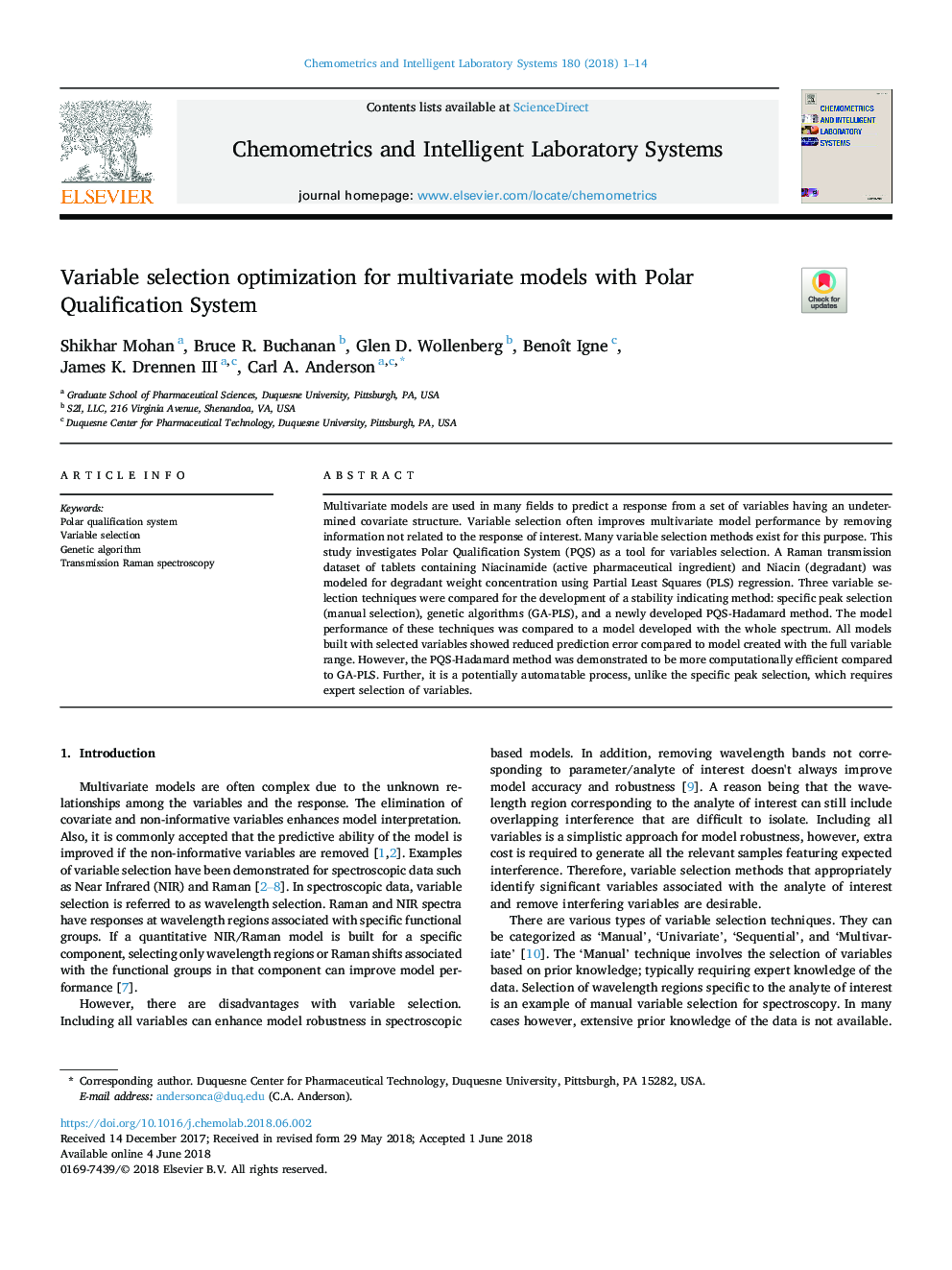| Article ID | Journal | Published Year | Pages | File Type |
|---|---|---|---|---|
| 7561749 | Chemometrics and Intelligent Laboratory Systems | 2018 | 14 Pages |
Abstract
Multivariate models are used in many fields to predict a response from a set of variables having an undetermined covariate structure. Variable selection often improves multivariate model performance by removing information not related to the response of interest. Many variable selection methods exist for this purpose. This study investigates Polar Qualification System (PQS) as a tool for variables selection. A Raman transmission dataset of tablets containing Niacinamide (active pharmaceutical ingredient) and Niacin (degradant) was modeled for degradant weight concentration using Partial Least Squares (PLS) regression. Three variable selection techniques were compared for the development of a stability indicating method: specific peak selection (manual selection), genetic algorithms (GA-PLS), and a newly developed PQS-Hadamard method. The model performance of these techniques was compared to a model developed with the whole spectrum. All models built with selected variables showed reduced prediction error compared to model created with the full variable range. However, the PQS-Hadamard method was demonstrated to be more computationally efficient compared to GA-PLS. Further, it is a potentially automatable process, unlike the specific peak selection, which requires expert selection of variables.
Related Topics
Physical Sciences and Engineering
Chemistry
Analytical Chemistry
Authors
Shikhar Mohan, Bruce R. Buchanan, Glen D. Wollenberg, Benoît Igne, James K. III, Carl A. Anderson,
